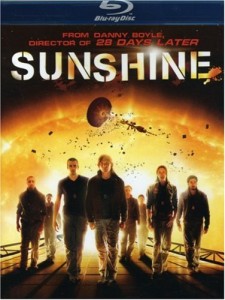 Since I’ve been writing over at Shakefire, I’ve gone through several phases of reviewing style. Back when I was being given lots of music, I tried to make sure I listened to the album, in full, while driving, while doing other things around the house and while actively listening to the music. That sort of regimen takes time which is part of the reason I don’t review music for them anymore – that and 90% of what they want me to review is music I don’t like, for some reason it was heavy on the hip-hop, jazz and screamo metal, though perhaps it’s just that their other music reviewers didn’t want to do those either.
Since I’ve been writing over at Shakefire, I’ve gone through several phases of reviewing style. Back when I was being given lots of music, I tried to make sure I listened to the album, in full, while driving, while doing other things around the house and while actively listening to the music. That sort of regimen takes time which is part of the reason I don’t review music for them anymore – that and 90% of what they want me to review is music I don’t like, for some reason it was heavy on the hip-hop, jazz and screamo metal, though perhaps it’s just that their other music reviewers didn’t want to do those either.
These days, I’m mostly reviewing movies and some TV for them and my approach has solidified, and as such I figured I would take a post to talk about it.
First, I watch the film. I try not to subject myself to any trailers or ads about it, and half the time I don’t even read the back of the DVD/Blu-ray case. I’d rather go in blind. I’ll look at the cover art, maybe the tag line and determine if it’s horror or not and then watch the movie. At the end, I jot down my opinion at a letter grade, which is one form the ratings for the site go into the system as. So, for instance, I might finish a movie and throw down that it was “D” effort.
Next, after having seen the movie, I’ll start in on any extras. Outtakes, deleted scenes, other featurettes. Sometimes I’ll watch these immediately after, and sometimes it’ll be on a later day – I usually have most movies in my hands 2 or 3 weeks prior to needing to turn in my review. If there is a commentary track, I’ll watch the movie again with it on, usually 2 or 3 days later, though it may be sooner if a Blu-ray has multiple commentary tracks to give myself the ability to skip a day between viewings – the only time I’ve ever not watched a commentary track was a movie (I forget which) that included 3 full length commentaries, I watched two and just couldn’t do the third because they’d all been terrible.
If the disc includes multiple cuts of the film, I’ll try to watch them all, but before doing so I’ll go online to see if I can find out how different the cuts are. I just watched a film that had the theatrical and director’s cuts on the disc, the director’s was 5 minutes shorter and supposedly bloodier, but damned if I could tell – they looked identical to me.
Lastly, I write the review. When I go to the site, there is a form I have to fill out, with names and dates and upload a cover images and Amazon product IDs and such. After I’m done with the busy work, I drop into the main text box and just start blabbering about the film. What I remember, what I liked, what I didn’t like, were the extras good, etc. Then I’ll go back through it once or twice, move some sentences around, change some wording. When I’m mostly happy with it, I’ll re-read the whole thing and try to gauge how I think “the author” feels about the movie and compare it to my initial gut reaction score. Upon reflection, most scores change. A movie I thought was a “D” effort might get upgraded to a “C” once I realize how much of the film stuck with me and there were things I enjoyed despite a movie’s flaws. And something I originally called an “A+” might get downgraded to an “A-” or into the “B” area if it turns out the flaws stuck with me far better than the good parts. Once I re-score, I’ll go back and make another pass through the review to ensure my words reflect my score. If I’ve upgraded a movie from “D” to “C” it doesn’t track that I called it “shitty” because “C” is average, so I might replace it with “middling”.
Not every movie gets a grade change though… things with an “A” or “A-” are likely to stay there since I probably recognized my reservations from the start and didn’t give it an “A+”, and something I wrote down “F” for after my initial watch is probably going to stay an “F”. In any event, now that I’m happy with the review and the grade, I have to score the grade. Yes, it sounds stupid, but the site tracks letter grades as well as a numeric. The number is a 0 to 4 (but not really, more on that in a minute) and an “F” covers from 0 to 0.79, so a movie that is terrible through and through will get an “F” and a “0”, a movie that has a terrible plot and poor production values, but has one actor who managed to be memorable in a good way will get an “F” and maybe a “0.70”. On the top end, the highest number is 4.5 (yep, that 0 to 4 scale goes to 4.5, so a movie can actually get a 4.5 out 4, which is like giving 110% … ) and through most of the ratings I used the corresponding numeric range similarly, the number gives the letter a weight – I go to the low-end of the range for something I feel just barely earned that grade, and I go to the high-end of the range for something that I felt earn the grade and were knocking on the door of an upgrade.
Once I’ve settled the numeric score, I tidy up a few last details and post the review.
On a side note, the grade I give a review also influences the amount of spoiling I’m willing to let myself do. The higher the grade, the less plot details I want to give out. Sometimes I have to force myself to write more on great movies because I’m temped to just say, “This was great. Go see it.” On low rated items, I consider it a service to spoil the film. Perhaps if you hear in exact detail how stupid the movie was, you won’t waste two hours watching it like I did.
Anyway, I enjoy reviewing, at least, I do now that I get stuff I like watching most of the time. The only thing that could make it better would be if my reviews (and Shakefire) were included in aggregate sites like Rotten Tomatoes or metacritic – not that I like aggregate site, I abhor what they’ve done to the gaming industry, but since they are likely here to stay it would be neat to be a part of it rather than just a victim reader.
 A man’s wife dies. Years later, his son says he should get re-married. The man is picky and has a list of desires for the perfect woman. His best friend concocts a plan where they will have a casting call for a movie and use it to find the man a wife.
A man’s wife dies. Years later, his son says he should get re-married. The man is picky and has a list of desires for the perfect woman. His best friend concocts a plan where they will have a casting call for a movie and use it to find the man a wife.










